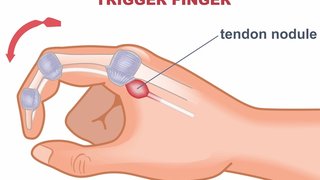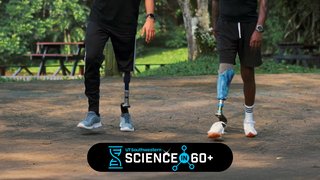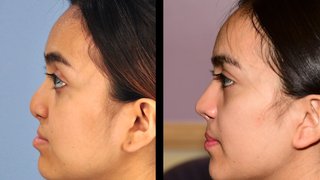How hand surgery restores dexterity for adults and children
January 14, 2025

The Complexity of the Human Hand
There are 27 bones, 34 muscles, and more than 100 ligaments in a healthy human hand – and when something goes wrong in this complex yet delicate appendage, it can make doing even the simplest tasks challenging or painful.
Common Hand-Related Health Problems
Hand-related health problems are common. Approximately 2 in 1,000 babies are born with congenital hand differences such as extra, missing, or underdeveloped fingers, and more than 18 million people break their hands or wrists each year worldwide.
The Importance of Early Treatment for Hand Injuries
In fact, I had a wrist injury of my own this summer when I fell while moving furniture and tried to brace myself with my hand. Luckily for me, my colleague, Shelby Lies, M.D., was able to verify that it was just a mild ligament strain. While conditions like mine can be managed at home, traumatic injuries, chronic pain, and some congenital hand differences may require reconstructive surgery to improve stability, strength, and function.
Expanding Hand Surgery Services at UT Southwestern
Hand surgeons often can relieve symptoms and restore dexterity even years after symptoms begin. As you might expect, earlier treatment typically provides the best outcomes – and that’s why our hand reconstructive surgery program is expanding. Beginning in October, we will be able to see more adult hand patients at UT Southwestern in Dallas, in addition to the VA North Texas Health Care System and our pediatrics sites in Dallas and Plano.
Comprehensive Care from Expert Hand Surgeons
Our hand surgery team – including certified hand therapists – has the skill to diagnose, treat, and help manage conditions ranging from arthritis and carpal tunnel syndrome to hand trauma and the most complex nerve disorders. We have the expertise to handle it all.
Adult Hand Conditions and Treatments
Many people live for years with pain or limited movement in their hands, not knowing that effective treatment could have resolved their condition sooner or provided much needed pain relief.
Understanding Dupuytren's Contracture
A classic example is Dupuytren’s contracture, which causes the fibrous layer of tissue in the palm and fingers to thicken and tighten into a cord, pulling one or more fingers toward the palm in an awkward, bent position. Commonly seen in adult patients in the fifth and sixth decade of life, many patients are told (mistakenly) that they just have to live with the disfiguring and debilitating condition – but a simple injection or tissue release procedure can drastically improve, and in some cases, restore movement.

Microsurgery for Dupuytren's Contracture
How our specialists treat the hand-deforming condition.
Managing Degenerative Hand Conditions
Degenerative conditions of the hands and wrists, such as arthritis, as well as tendinitis and nerve compressions such as carpal tunnel syndrome become more common with age. They can sometimes cause joints and tissues to break down over time, leading to pain, stiffness, and swelling. Most patients can manage symptoms with medication and hand therapy during the early stages of these conditions. However, surgery can:
- Remove damaged or arthritic tissue
- Rebuild or replace severely damaged tissues
- Release compressed nerves or stiff tissues
- Repair damaged nerves, tendons, or ligaments
Addressing Nerve Damage in the Hand
Nerve damage or compression is a common cause of hand problems in adults. For example, injury to the brachial plexus, a network of nerves in the neck and shoulders, can cause pain, weakness, numbness, or paralysis in the shoulder, arm, and hand.
Mild nerve injuries often heal without surgical treatment, while moderate to severe injuries may require decompression, mobilization, or microsurgery, which involves repairing or reconstructing tiny nerves and intricate blood vessels under a microscope.
Treating Traumatic Hand Injuries
Traumatic injuries are the most complex – yet very common – hand conditions we see in adults. Severed or deeply lacerated fingers, crushed bones or complex fractures, and severe damage to muscles, tendons, or ligaments in the hands often require surgery. As hand surgeons, we use our surgical skills to repair, rebuild, or remove bony structures in tandem with microsurgical nerve and tissue repair to restore form and function to the hand.
Pediatric Hand Conditions and Treatments
Healing Hand Fractures in Children
For our patients with small and still-growing hands, our goal is to restore function and form today so they can do anything they want to do in the future with the least amount of restrictions. For example, treating hand fractures in children is very different from treating adults. Adults often need surgery, and their bones take much longer to heal.
Kids’ bones often heal in a matter of weeks, and part of the challenge of treating them is making sure they are adequately healed before returning to full, unrestricted play and activities. They often feel better quickly, even if they’re not yet fully healed.
While an adult might just need a brace, we may put a child in a cast. The goals are to stabilize the hand or arm and to protect their growth plates – the space and tissue at the end of a child’s bones that allow room for growth – while allowing them to engage with the world around them in a protected fashion.
Correcting Congenital Hand Differences
Congenital hand differences often develop early in pregnancy and can affect both shape and function. Approximately 2 of every 1,000 babies have congenital hand differences, which affect more boys than girls. Some of the most common hand differences include:
- Polydactyly, which involves an extra finger or digit-like tissue on the hand. The hand surgeon can remove extra bone and tissue, reconstruct ligaments to support the finger joints, and reposition the tendons as needed for improved function.
- Syndactyly, in which the fingers are fused together. Reconstruction involves separating the fingers and resurfacing the spaces between them with small flaps made from the child’s healthy tissue, reducing the risk of scar tissue limitation and allowing the fingers to move independently.
- Thumb hypoplasia, in which the thumb is small or missing muscles or ligaments to stabilize the joint. A hand surgeon can transplant expendable tissue from another tendon to the thumb to improve motion and stability.
Related reading: When your baby is born with less than 10 fingers and 10 toes
Hand Therapy is Crucial for Proper Healing
Almost any hand treatment we recommend will involve occupational therapy – it is shown to reduce overall treatment time and improve long-term functional outcomes. Certified hand therapists are embedded in all our clinics, and they are critical in developing effective treatment plans for children and adults.
After injury or surgery, you may need to see a hand therapist for a few weeks or months. You’ll get a personalized circuit of stretches, movements, and weight-bearing activities to do in the clinic and at home. Sticking to your program will help you achieve the best long-term outcomes for strength and functionality.
Participating in hand therapy can be uncomfortable initially– the hand houses dozens of sensitive nerves. After weeks of immobility for healing, you’ll likely have to contend with stiff, sore tissues. Your hand surgeon will help you prepare by talking with you about expected timelines for recovery and the level of pain you can reasonably anticipate during therapy.
Reclaiming Dexterity and Hand Function
It’s easy to take dexterity and the many day-to-day tasks your hands perform for granted. But when you lose function, a hand specialist can help you get it back – whether you need medication, therapy, or an advanced surgery.
To explore hand surgery options, call 214-645-2353 or request an appointment online.











